Rare Regency Boxwood and Cherrywood Scale Model (15ft: 1 inch) of the 120 Gun First Rate ‘Caledonia’ Ship H.M.S. Royal George Designed by Sir Robert Seppings in 1819
A Rare Regency Boxwood and Cherrywood Scale Model (15ft: 1 inch) of the 120 Gun First Rate ‘Caledonia’ Ship H.M.S. Royal George Designed by Sir Robert Seppings in 1819
With a revolutionary rounded bow that made the vulnerable head rails normally used obsolete enabling heavier guns to be carried and a drier and more rigid passage underway
The cherry wood frames pierced with gunport and pinned boxwood stringing the internal stretchers mounted at an angle on keel blocks
Contained in a finely realised dockyard slipway with lined boxwood pavements interspersed with sandpaper ‘shingle’ twin access steps and bitts
All contained within the original removable glazed wooden case
Early 19th Century
Size: case: 19.5cm high, 40cm wide, 14cm deep - 7¾ ins high, 15¾ ins wide, 5½ ins deep
With a revolutionary rounded bow that made the vulnerable head rails normally used obsolete enabling heavier guns to be carried and a drier and more rigid passage underway
The cherry wood frames pierced with gunport and pinned boxwood stringing the internal stretchers mounted at an angle on keel blocks
Contained in a finely realised dockyard slipway with lined boxwood pavements interspersed with sandpaper ‘shingle’ twin access steps and bitts
All contained within the original removable glazed wooden case
Early 19th Century
Size: case: 19.5cm high, 40cm wide, 14cm deep - 7¾ ins high, 15¾ ins wide, 5½ ins deep
Sir Robert Seepings (1767 - 1840) was surveyor of the Navy from 1813 to 1832. Born in Fakenham, Norfolk he was apprenticed to H.M.N.B. Devonport Plymouth in 1782. By 1800 he had risen to be master shipwright assistant in the yard and had invented a device which greatly reduced to time required to repair the hulls of ships in dry dock compared to the laborious process of lifting which was then in use. For this invention he was awarded £1000 by the Admiralty and it became known as ‘Seppings blocks’. One of his most famous quotations was ‘partial strength produces general weakness’ and he significantly improved the strength and seaworthiness of the Navy’s fleet. He improved the design of the bow and stern, but his greatest influence on ship design was in the introduction of ‘diagonal bracing’ into the construction of the hull.
He was instrumental, along with other innovators, in the introduction of iron elements into ship construction reducing the need for grown timbers which were increasingly in short supply. These stronger designs also offered better protection to the ship’s crew against the enemy’s fire, permitted a powerful armament to be fitted in the bow and better allowed the ships to be kept on station during bad weather.
In 1819 Seepings was Knighted. He died in Taunton in 1840.
He was instrumental, along with other innovators, in the introduction of iron elements into ship construction reducing the need for grown timbers which were increasingly in short supply. These stronger designs also offered better protection to the ship’s crew against the enemy’s fire, permitted a powerful armament to be fitted in the bow and better allowed the ships to be kept on station during bad weather.
In 1819 Seepings was Knighted. He died in Taunton in 1840.
Rare Regency Boxwood and Cherrywood Scale Model (15ft: 1 inch) of the 120 Gun First Rate ‘Caledonia’ Ship H.M.S. Royal George Designed by Sir Robert Seppings in 1819
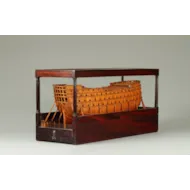
SOLD
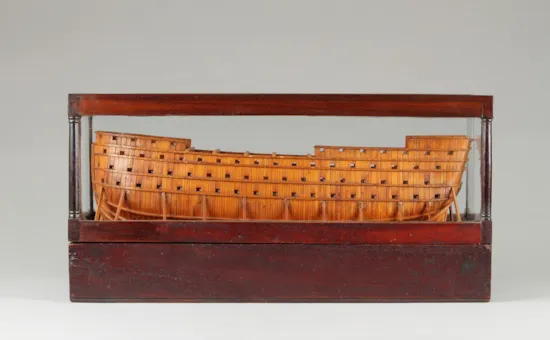
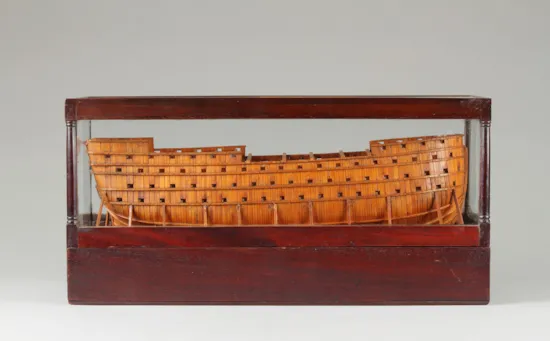

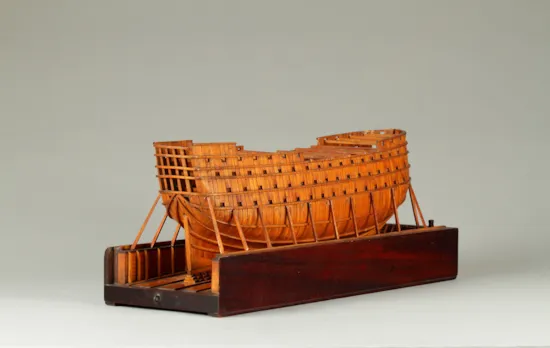
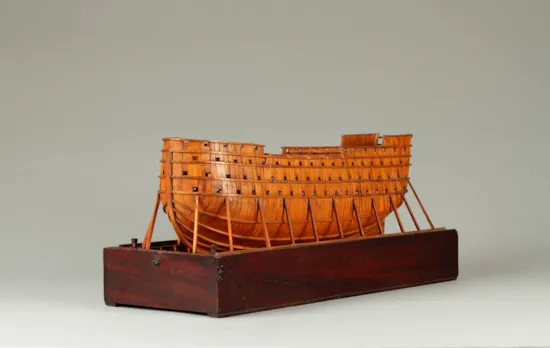
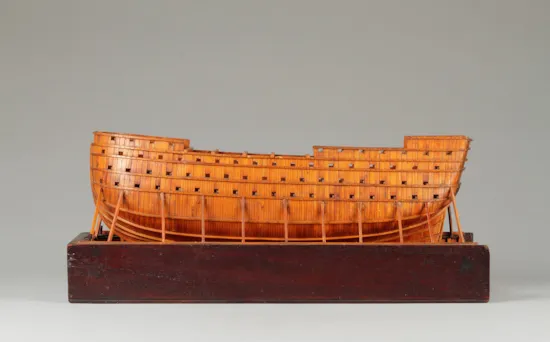
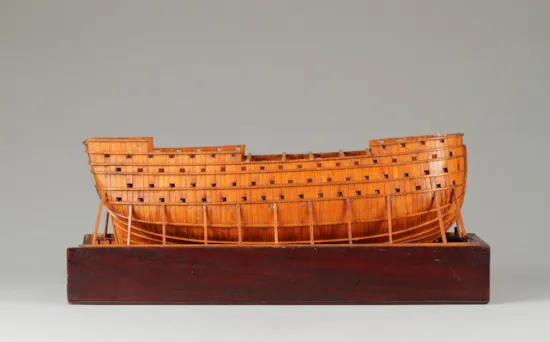
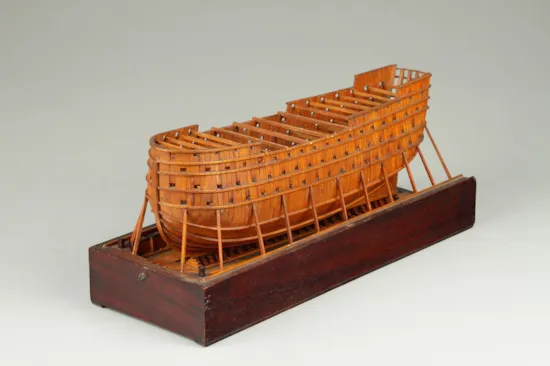
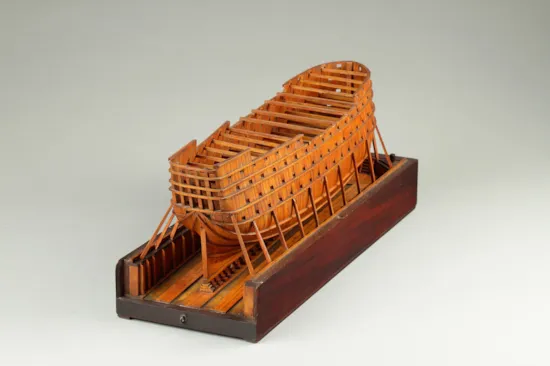
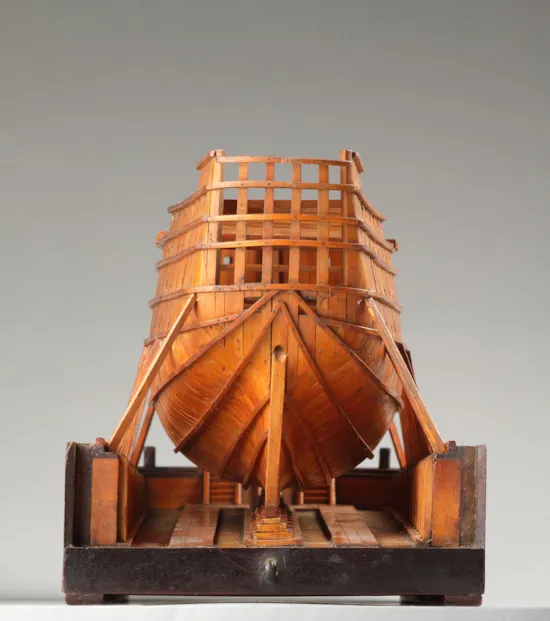
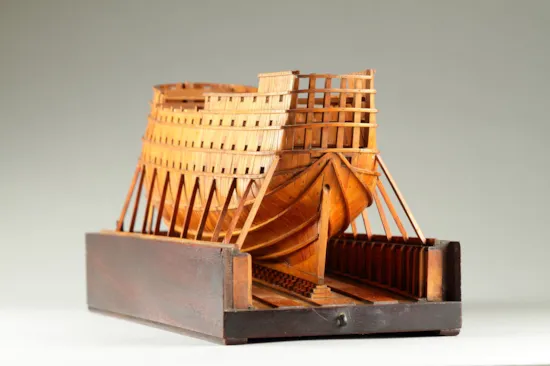
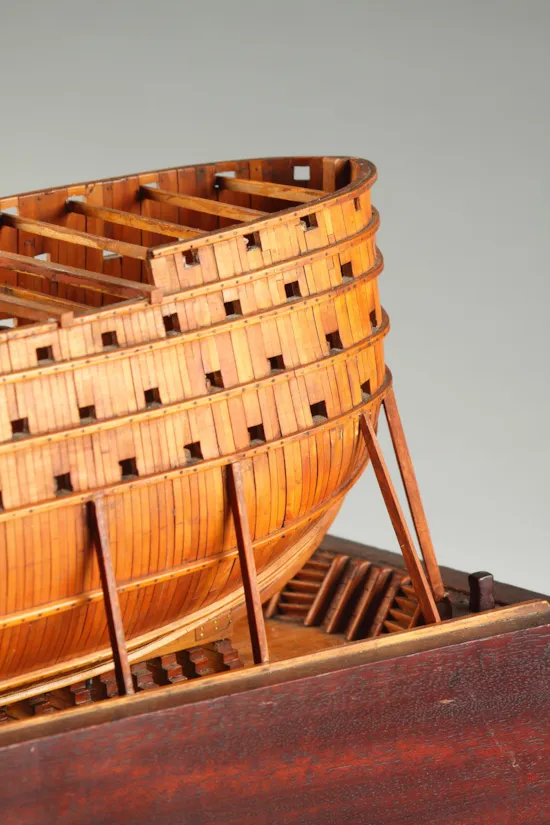
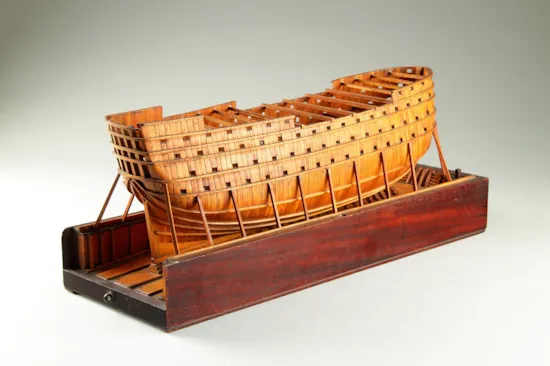
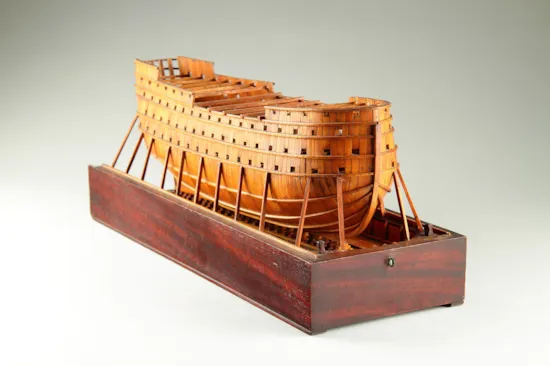














YOU MAY ALSO LIKE

